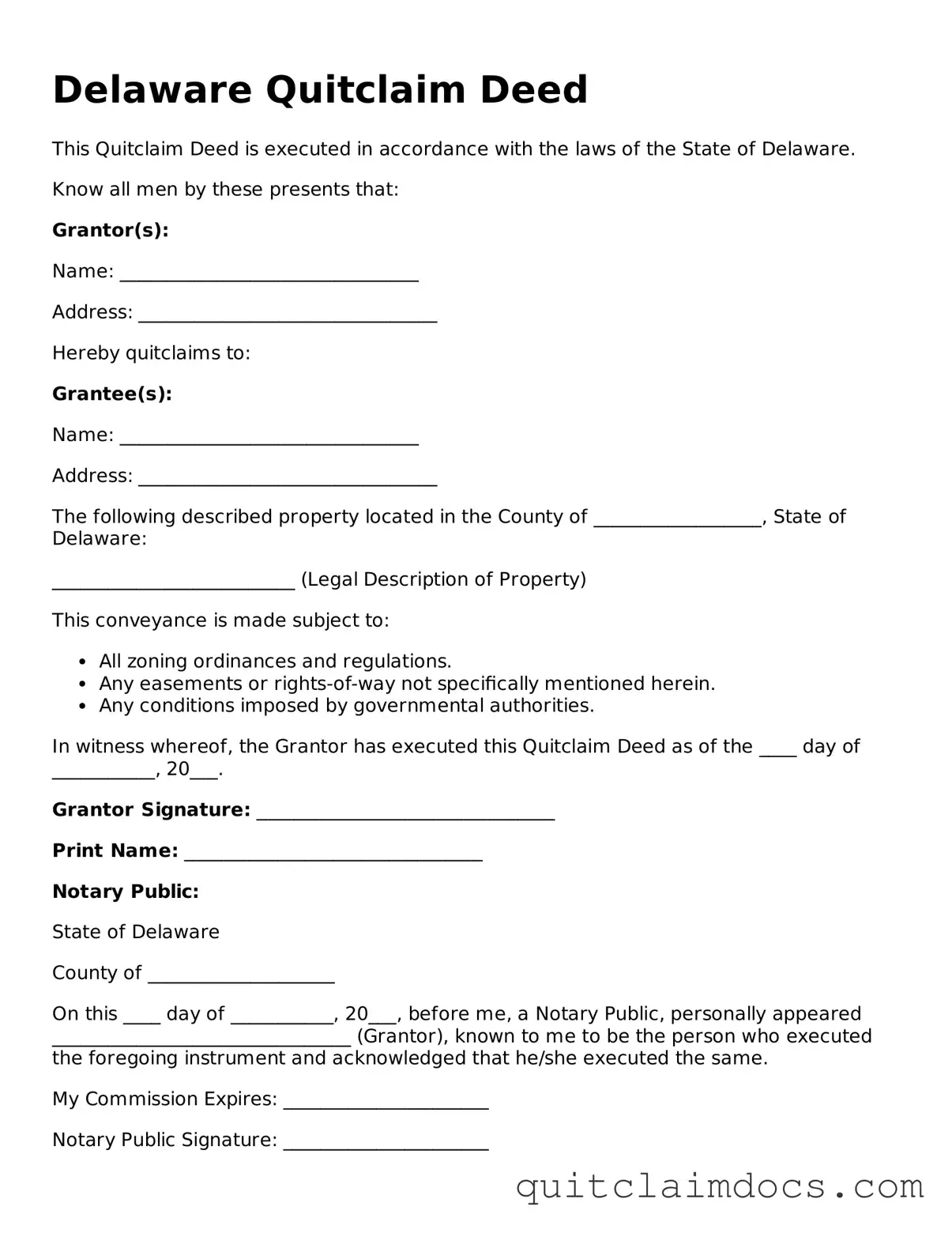Delaware Quitclaim Deed
This Quitclaim Deed is executed in accordance with the laws of the State of Delaware.
Know all men by these presents that:
Grantor(s):
Name: ________________________________
Address: ________________________________
Hereby quitclaims to:
Grantee(s):
Name: ________________________________
Address: ________________________________
The following described property located in the County of __________________, State of Delaware:
__________________________ (Legal Description of Property)
This conveyance is made subject to:
- All zoning ordinances and regulations.
- Any easements or rights-of-way not specifically mentioned herein.
- Any conditions imposed by governmental authorities.
In witness whereof, the Grantor has executed this Quitclaim Deed as of the ____ day of ___________, 20___.
Grantor Signature: ________________________________
Print Name: ________________________________
Notary Public:
State of Delaware
County of ____________________
On this ____ day of ___________, 20___, before me, a Notary Public, personally appeared ________________________________ (Grantor), known to me to be the person who executed the foregoing instrument and acknowledged that he/she executed the same.
My Commission Expires: ______________________
Notary Public Signature: ______________________
